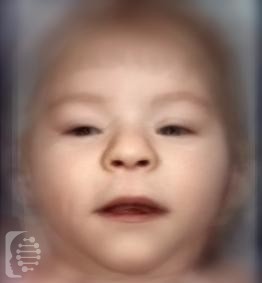What is Chromosome 3pter-p25 Deletion syndrome?
Chromosome 3pter-p25 Deletion syndrome is a rare genetic syndrome that can cause severe to profound intellectual disability.
However, in some instances, normal intelligence with just mild abnormalities has also been associated with the syndrome.
Syndrome Synonyms:
3p- Syndrome
What gene change causes Chromosome 3pter-p25 Deletion syndrome?
The syndrome is caused when a small piece of chromosome 3, at a specific location on chromosome, 3pter-p25 is deleted from each cell. The majority of cases are not inherited.
Microdeletion inheritance occurs when there is a deletion of several genes on a chromosome. The specific chromosome on which the deletions occur will determine the syndrome they cause.
In some cases, a genetic syndrome may be the result of a de-novo mutation and the first case in a family. In this case, this is a new gene mutation which occurs during the reproductive process.
What are the main symptoms of Chromosome 3pter-p25 Deletion syndrome?
The presentation and severity of symptoms associated with the syndrome vary between individuals affected- according to the exact size and location of the deletion, as well as the genes involved.
Some individuals present with no symptoms at all, while others with very severe intellectual disability and developmental delays. Others are also diagnosed with autism spectrum disorder and sometimes OCD (obsessive-compulsive disorder).
The syndrome may be identified in infants due to the following symptoms:
- failure to thrive including delayed growth, feeding difficulties, and hypotonia (low muscle tone).
- Facial features of the syndrome include wide-set eyes, a small lower jaw, a very small head, ptosis, and telecanthus.
- A cleft palate, congenital heart defects (such as atrioventricular septal defects), and gastrointestinal anomalies are variable features.
Possible clinical traits/features:
Prominent metopic ridge, Ptosis, Telecanthus, Upslanted palpebral fissure, Synophrys, Triangular face, Microcephaly, Umbilical hernia, Spasticity, Atrioventricular canal defect, Blepharophimosis, Brachycephaly, Abnormality of periauricular region, Abnormality of calvarial morphology, Cleft palate, Aplasia/Hypoplasia of the corpus callosum, Epicanthus, Feeding difficulties in infancy, Depressed nasal bridge, Flat occiput, Clinodactyly of the 5th finger, Complete atrioventricular canal defect, Downturned corners of mouth, Cryptorchidism, Ventriculomegaly, Postnatal growth retardation, Cognitive impairment, Short stature, Hearing impairment, Hypertelorism, Hypertonia, High palate, Prominent nasal bridge, Autosomal dominant inheritance, Periorbital fullness, Seizure, Sacral dimple, Retrognathia, Thin vermilion border, Trigonocephaly, Short neck, Postaxial polydactyly, Postaxial hand polydactyly, Micrognathia, Intrauterine growth retardation, Muscular hypotonia, Preauricular pit, Abnormal renal morphology, Macular hypoplasia.
How is it diagnosed?
To find out if someone has a diagnosis of Chromosome 3pter-p25 Deletion syndrome, it is important to have a consultation and evaluation with a clinical genetic specialist. Specialists may also suggest specific genetic testing or other types of tests to help reach a diagnosis. FDNA’s AI technology can help speed up the diagnostic process by analyzing facial features and other health information.

